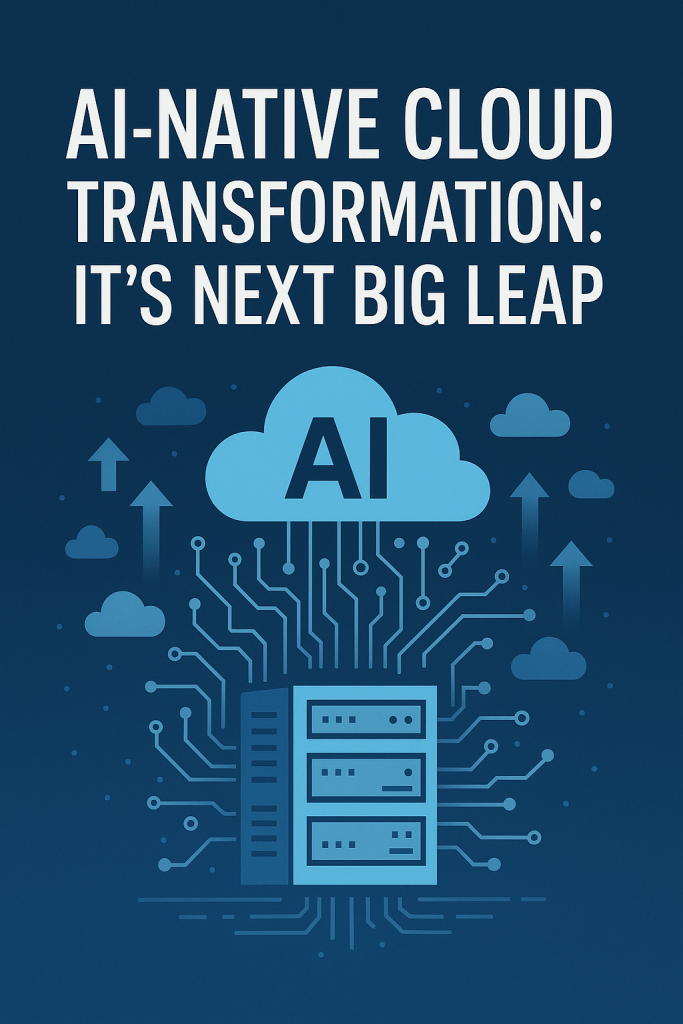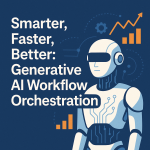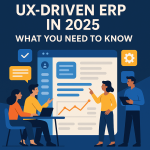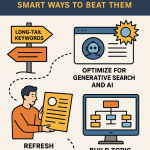AI is no longer just a tool. AI is now becoming the foundation. AI is powering how companies design, build, and manage technology at scale. This shift, known as AI-native cloud transformation, is not simply about hosting data or applications—it’s about reshaping the very core of enterprise IT.
As we enter cloud infrastructure 2025, businesses are facing new pressures. Customers demand faster services. Markets shift in real time. Security threats evolve daily. To keep up, companies need systems that do more than respond—they must anticipate, learn, and adapt. This is where AI-driven cloud platforms step in. They combine intelligence with infrastructure, creating IT environments that are smarter, more resilient, and future-ready.
AI-Native Cloud: The Engine Behind Transformation
AI-native cloud represents the next stage of enterprise computing. Instead of adding artificial intelligence as an optional layer, the intelligence is built into the infrastructure itself.
Cloud transformation has always been about scalability, flexibility, and efficiency. But AI changes the equation. It allows systems to provision resources automatically, predict performance issues, and optimize workloads in real time. In practice, this means IT teams spend less time firefighting and more time driving innovation.
For enterprises, the benefit is clear: decisions are faster, operations are smoother, and systems become capable of self-adjustment. Instead of being static, infrastructure becomes a living, learning ecosystem.
Cloud Infrastructure 2025: Smarter by Design
Cloud infrastructure 2025 is not the same as the cloud we knew in the last decade. It is smarter, leaner, and more proactive. Instead of simply storing data and running applications, infrastructure now interprets patterns, analyzes performance, and makes decisions.
AI-native capabilities ensure systems adapt instantly. Workloads are balanced intelligently. Data traffic is routed efficiently. Risks are addressed before they escalate.
This transformation is not just technical—it’s cultural. Enterprises that once viewed IT as a support function now see it as the heart of strategy. CIOs are no longer guardians of systems; they are enablers of growth, resilience, and innovation.
AI-Driven Cloud Platforms: Powering the Future
AI-driven cloud platforms make this transformation tangible. They integrate AI into every layer of the stack—compute, storage, networking, and security. The result is infrastructure that continuously learns and optimizes.
These platforms are especially critical for enterprises operating in hybrid or multi-cloud environments. They decide in real time where workloads should run for the best results—whether on-premise, in the public cloud, or at the edge. The ability to adapt instantly reduces costs while maintaining peak performance.
Even more, they embed security intelligence into every transaction. Threats are not only detected but often neutralized before human teams notice them. That is the difference between traditional IT management and the AI-native model.
10 Techniques Driving AI-Native Cloud Transformation
Let’s look at ten detailed techniques shaping how AI-native cloud transformation is revolutionizing enterprise IT in 2025.
1. AI-Driven Automated Provisioning
AI-driven provisioning eliminates manual setup. Instead of configuring servers step by step, enterprises rely on automation powered by predictive models.
The result is faster deployment and fewer mistakes. Businesses can launch new applications in hours, not days. This makes IT more responsive to customer needs and market shifts.
2. Predictive Scaling with Cloud Infrastructure 2025
Scaling has always been expensive. Enterprises often overpaid for unused capacity. But cloud infrastructure 2025 uses predictive analytics to forecast demand.
During peak events like holiday sales or product launches, systems scale automatically. When traffic stabilizes, they scale back down. Costs shrink while performance remains steady.
3. Self-Healing IT Systems
Self-healing is no longer science fiction. AI-native platforms detect system failures, apply fixes, and restore functionality without manual intervention.
If a server overheats, the system shifts workloads elsewhere. If storage fails, backups activate instantly. Businesses stay online with minimal disruption.
4. AI-Powered Security Intelligence
AI-driven cloud platforms treat security as a continuous process. They monitor traffic, identify anomalies, and neutralize risks in real time.
Unlike static rules, these systems adapt to new cyber threats. Each incident makes the platform smarter, creating an evolving shield around enterprise assets.
5. Real-Time Resource Optimization
AI ensures every unit of CPU, memory, and storage is used efficiently. Instead of overloading some servers while others sit idle, resources are distributed intelligently.
This results in better performance and cost savings. It also reduces energy waste, aligning IT operations with sustainability goals.

6. Smart Workload Orchestration
Deciding where to run workloads used to be complex. With hybrid and multi-cloud strategies, the challenge has grown.
AI-native cloud solves this by analyzing latency, compliance, and costs before placing workloads. This leads to smarter, faster decisions—and more reliable systems.
7. Continuous AI-Enhanced Analytics
Data volumes keep exploding. Without AI, analytics would lag behind reality.
AI-native platforms deliver real-time insights. They reveal customer behavior, highlight inefficiencies, and predict trends. With faster analysis, enterprises act sooner and outperform competitors.
8. Sustainable IT with AI
Sustainability is now a business priority. AI-native systems manage energy use intelligently, shifting workloads to reduce power consumption.
For example, workloads may be routed to data centers with renewable energy availability. This reduces carbon footprints while lowering costs.
9. AI Integration at the Edge
Edge computing is growing fast. AI ensures seamless integration between edge devices, on-prem systems, and the cloud.
This is essential for industries like healthcare and automotive, where real-time processing saves lives and drives innovation. The cloud no longer feels distant—it works as close as possible to the end user.
10. Adaptive Learning IT Systems
Perhaps the most revolutionary feature is adaptability. AI-native cloud infrastructure doesn’t stay still. It learns from failures, adapts to new workloads, and evolves automatically.
This means enterprises are not stuck with outdated systems. Their infrastructure grows smarter over time, providing a long-term competitive advantage.
The Human Side of Cloud Transformation
It’s easy to focus only on technology. But the real impact lies in how people experience IT. Employees benefit from faster tools. Customers enjoy smoother digital experiences. IT teams shift from being problem-solvers to innovation leaders. This shift is not passive. It is active, intentional, and cultural. Organizations that embrace it position themselves to thrive in unpredictable markets.
AI-Native Cloud: The Strategic Edge
AI-native cloud is more than a technical upgrade. It is a strategic edge. Companies that adopt AI-native platforms enjoy speed-to-market advantages. They reduce costs while improving resilience. They unlock data-driven insights that fuel innovation.
And here’s the critical truth: companies that wait risk falling behind. Competitors who master AI-driven cloud platforms will deliver faster, smarter, and safer services. In the race for digital leadership, hesitation is costly.
Conclusion: IT’s Next Big Leap
The story of IT has always been about evolution. First came mainframes, then client-server systems, then cloud. Now, the leap is to AI-native cloud transformation.
This is more than hype. It’s the reality of cloud infrastructure 2025 and the future of enterprise technology. With AI-driven cloud platforms, companies gain not just smarter systems but entire ecosystems that adapt, heal, and grow.
AI-native cloud. Cloud transformation. IT redefined. Together, they represent the next big leap into a future where infrastructure is not managed—it manages itself.






